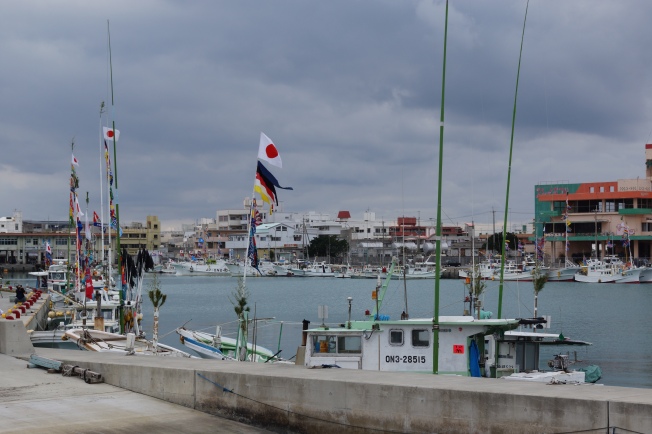When most people think of the new year the first thing that comes to mind is "December 31" which is the end of what is known as the Gregorian Calendar. In other parts of the worls, however, the year is determined by the cycle of the moon. The end of the year as per this type of calendar is generally referred to as the "Lunar New Year" or the "Chinese New Year".
So why talk about the Lunar New Year on a blog which focuses on Okinawa? Well, that's because at one time the Lunar New Year was also celebrated right here on our tiny little island and in some places still is.
Before "Okinawa":
Okinawa has a long rich history but not all of it is as "Okinawa" and a lot of it isn't as "Japan" either. Before Okinawa got it's modern day name it was known as the Ryukyu Kingdom. This probably sounds familiar to you as the word "Ryukyu" is still used often. These islands which make up the Ryukyu Kingdom were what one might describe as a nation of their own which was heavy in trade. This is why many people today refer to Okinawa as the "Other Japan" and are often baffled by the cultural differences between Okinawa and Mainland Japan. One of the very many differences between the Ryukyu Kingdom and what we know as Okinawa today was the celebration of the Lunar New Year rather than the Gregorian New Year.
Misplaced or possibly misunderstood history:
As with many things throughout history a transition had to have taken place between the Ryukyu Kingdom celebrating the Lunar New Year and Okinawa celebrating the Gregorian New Year. Researching this aspect of history became a bit difficult as does researching any part of Okinawa's history, in English, which is not WWII related. I started to get mixed results. Some of which mentioned that the transition came following WWII others stating that it came before that time.
My assumption based on what I read is that this transition really started to take effect at some point during World War I. Although Japan had annexed Okinawa well before this time this is when some of the transition started to take place from being Okinawa to actually being a "cohesive" part of Japan. With the knowledge that I have regarding other transitions that happened during the Word War I time frame I feel as though it's an educated guess to say that this transition happened during thins period as well.
Where the tradition is preserved:
Even though some of the history remains unclear as to when the Lunar New Year fell out of fashion one fact that we do know is that some of the traditions which were celebrated all those years ago are still preserved today in a place called Itoman.
You may be familiar with Itoman because of some of its World War II related attractions to include Peace Prayer Memorial Park and the Himeyuri Museum and Memorial. Itoman is also known for it's fishing and being one of the main ports used in trade with China throughout Okinawa's history. One of the less known facts, however, is that Itoman has had a tight grasp on tradition of celebrating the Lunar New Year even when others were strongly against it. Some local news papers and journals at the time (1920's) even went to far as to call the people of Itoman "barbarians" and "criminals" simply based on their observance and open celebration of this Lunar New Year.
With what I imagine took a great deal of perseverance the people of Itoman continue the tradition of celebrating the Lunar New Year although it is without a doubt less popular of a celebration nowadays as it was during the times of the Ryukyu Kingdom. Even so you can still find small celebrations throughout the city to include enjoying foods, especially those which include pork and flying colorful flags off fishing boats.

The Experience:
For someone like myself who gets a kick out of being somewhere historically significant making the trip to Itoman was well worth it. As we drove closer to the Itoman Road Station, the location of some scheduled performances and events, you could start to see the fishing boats decorated with colorful flags which seemed to pop against the grey overcast sky. Once arriving at the road station itself we could see where the performance of the PACAF Band (who was scheduled this year to perform earlier in the day) had been and various vendors were along the walkways. Vendors were selling everything from food to hand carved toys and plants.
This event is not for those who are looking for a huge to do with all the fixings of a festival that you might experience during the Gregorian New Year or Cherry Blossom viewing. Even after driving around the entire area we were unable to find anything of the sort. This may be due to bad weather although I gather that this is more of a time to spend with friends and family then out on the streets. Even with this being the case there were people walking along the docks taking photos of the fishing boats and the colorful display of flags.
No comments:
Post a Comment